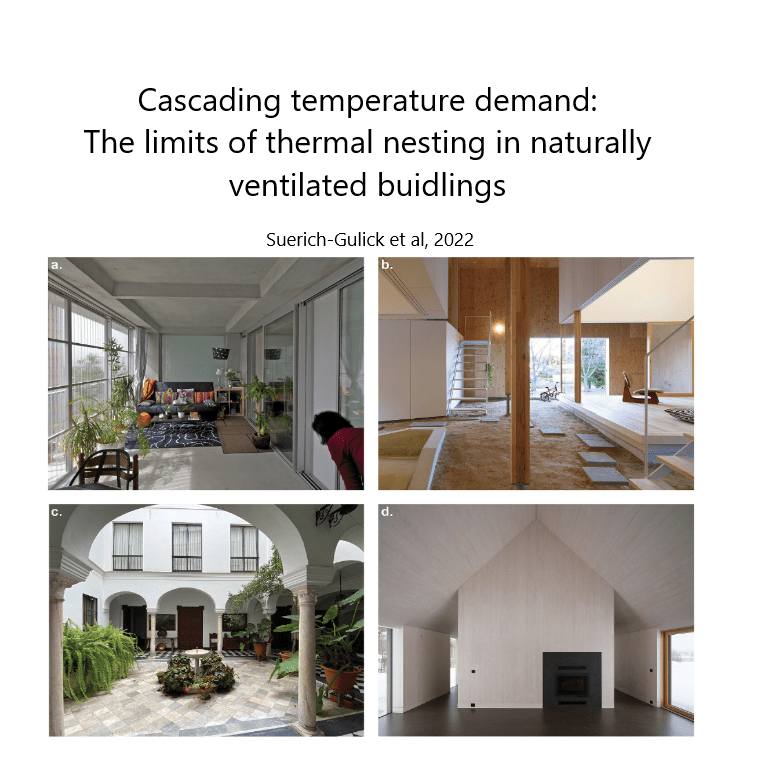Cascading temperature demand: The limits of thermal nesting in naturally ventilated buildings

A temperature cascade refers to a series of spaces that are progressively warmer or cooler than the exterior. Thermal nesting refers to architectural configurations that produce temperature cascades. This study shows how to design a thermally nested scheme that generates a natural temperature cascade, which occupants may adapt to with the change of seasons or during a heatwave. A steady-state model for any temperature cascade ventilated by thermal buoyancy is presented. The thermal comfort and energy-saving limits are analyzed compared to a single space of uniform temperature, ventilated by natural mixing. Adaptive comfort and heat stress theory inform the choice of stepwise temperatures in the cascade. The most comfortable space in the cascade has supplementary heating or cooling, but only when necessary. The buoyancy ventilation occurs separately in each space, or through each space in series. Heat recycling occurs through the partition walls. The results suggest that a high degree of thermal nesting can reduce energy demand by more than 50% in moderately hot or cold exterior conditions. The relative energy savings increase with the degree of nesting, the benchmark envelope conduc-tance, and the size of the temperature increments. Three-step cascades save slightly more energy than two-step cascades, because the envelope losses are smaller. Flow-divided configurations save more energy than flow- connected ones, because the ventilation heat loss is divided into smaller flows with smaller temperature increments.
The above figure shows examples of thermal nesting. Find the complete study in the next link:
https://www.sciencedirect.com/science/article/pii/S0360132321009987?via%3Dihub
